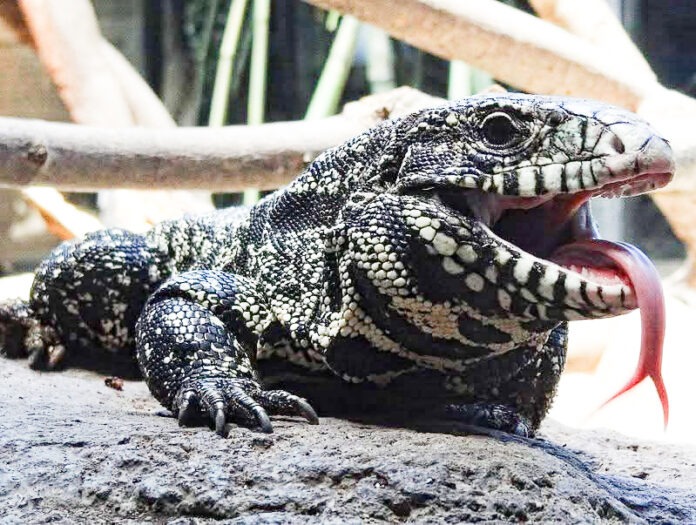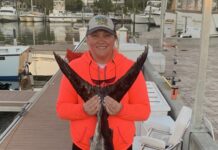
Add tegus to the list of invasive species posing an environmental threat to the Florida Keys.
On March 4, the Florida Keys National Wildlife Refuges alerted the public to the black and white tegu sighting. The tegu was found hit and killed by a vehicle on County Road 905 in North Key Largo, according to Arielle Callender, Florida Fish & Wildlife Conservation spokeswoman.
“Staff at the Crocodile Lake Wildlife Refuge was given the carcass and sent it to either (U.S. Geological Survey) or University of Florida for necropsy,” she said.
“Public assistance in reporting sightings is crucial for slowing their spread and protecting vulnerable species from predation, including the American crocodile and the Key Largo woodrat,” said the Florida Keys National Wildlife Refuges, which oversees refuges including Crocodile Lake National Wildlife Refuge in North Key Largo.
According to the Florida Fish & Wildlife Conservation Commission, Argentine black and white tegus aren’t native to Florida and are considered invasive due to their effects on native wildlife. They can reach up to 4 feet in length. They have a black and white coloration that is often arranged in a banding pattern across the back and tail. Not only can they climb a few feet off the ground, but they can also swim.
“Reproducing populations of Argentine black and white tegus are established in Hillsborough and Miami-Dade and Charlotte counties,” FWC says. “An emerging population was recently discovered in St. Lucie County after several confirmed reports were received through the FWC’s exotic species hotline.”
A large population is centered in Florida City and spreading into new areas, according to the Center for Invasive Species and Ecosystem Health at the University of Georgia.
“Researchers believe the emergence of tegus in South Florida occurred either through escapes, intentional captive animal or pet releases,” FWC says.
The March 4 tegu sighting wasn’t the first. State wildlife officials were called to Islamorada for a spotted tegu. It was trapped and removed.
Tegus usually become a problem in February when they begin to emerge from their burrows after going into a hibernation-like period known as brumation. Females can lay an average of 35 eggs per year. Eggs incubate for 60 days and require stable temperatures for successful hatching.
Tegus pose a threat to Florida’s native wildlife, as they tend to eat American alligator eggs and disturb American crocodile nests in Florida. Research by FWC also found they consume juvenile gopher tortoises and agriculturally valuable foods.
Tegus were added to Florida’s prohibited species list, meaning these species held by eligible entities are limited to research, educational exhibit, control or eradication. Those who own them as a pet prior to 2021 needed to apply for a permit, have them tagged and have indoor caging.
Like all nonnative reptile species, FWC says tegus are not protected in Florida except by anti-cruelty law and can be humanely killed on private property with landowner permission. This species can be humanely killed year-round and without a permit or hunting license on 32 commission-managed lands in south Florida.
Those who spot a black and white tegu should call 1-888-Ive-Got1.
Tegus and Burmese pythons are among the invasive species posing dangers to the environment in South Florida and the Keys. The python population was centered within Everglades National Park, but has since expanded to just south of Lake Okeechobee to Key Largo and from western Broward County west to Collier County. In the Keys, the pythons pose a significant threat to the federally-designated endangered Key Largo woodrat.























